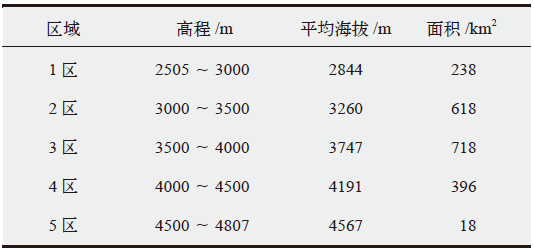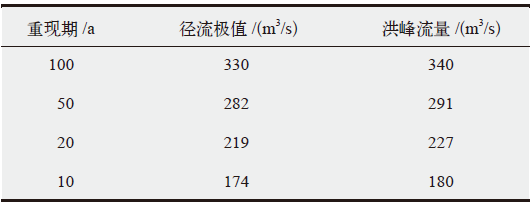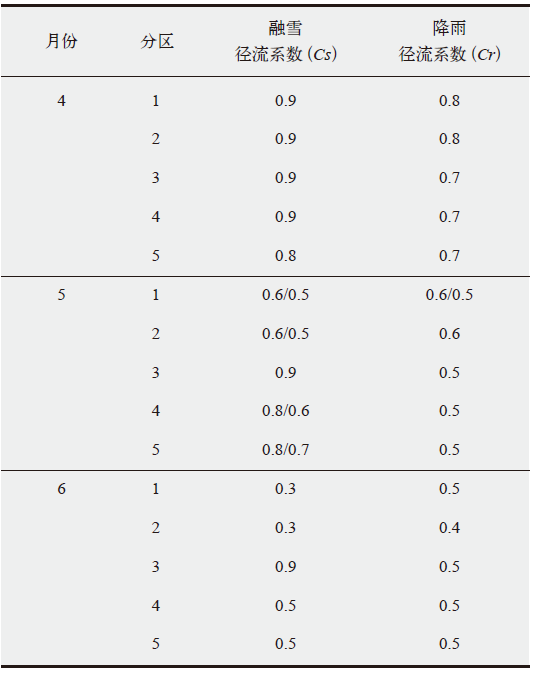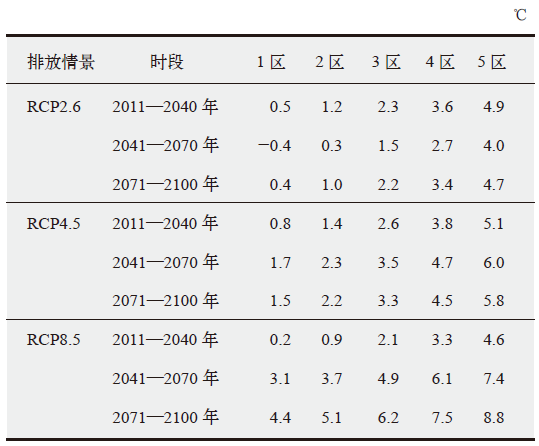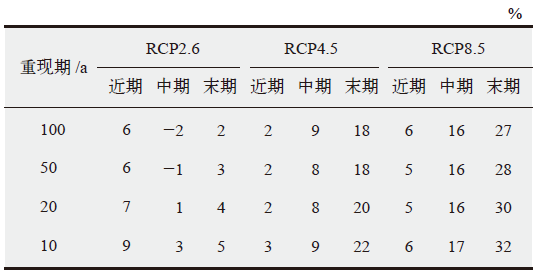Climate Change Research ›› 2020, Vol. 16 ›› Issue (6): 667-678.doi: 10.12006/j.issn.1673-1719.2020.006
• Changes in Climate System • Previous Articles Next Articles
Spring snowmelt flood estimate in the upper Heihe River under climate change
ZHU Guang-Xi1( ), XIAO Cun-De1, CHEN Bo1, ZHAO Ying-Dong2
), XIAO Cun-De1, CHEN Bo1, ZHAO Ying-Dong2
- 1 State Key Laboratory of Earth Surface Processes and Resource Ecology, Beijing Normal University, Beijing 100875, China
2 Hydrology and Water Resources Bureau of Gansu Province, Lanzhou 730000, China
-
Received:2020-01-08Revised:2020-02-20Online:2020-11-30Published:2020-12-03
Cite this article
ZHU Guang-Xi, XIAO Cun-De, CHEN Bo, ZHAO Ying-Dong. Spring snowmelt flood estimate in the upper Heihe River under climate change[J]. Climate Change Research, 2020, 16(6): 667-678.
share this article
Add to citation manager EndNote|Ris|BibTeX
URL: http://www.climatechange.cn/EN/10.12006/j.issn.1673-1719.2020.006
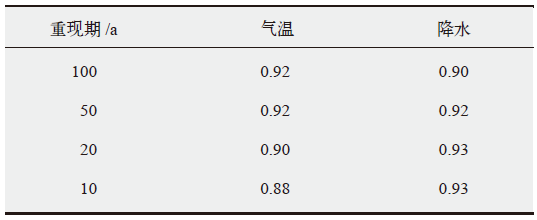 |
Table 7 Pearson correlation coefficient of simulated runoff value for different return periods with temperature and precipitation under climate change
 |
| [1] | 暴丽杰. 基于情景的上海浦东暴雨洪涝灾害脆弱性评估[D]. 上海: 上海师范大学, 2009. |
| Bao L J. Scenario-based vulnerability assessment of flood and flood disasters in Pudong, Shanghai[D]. Shanghai: Shanghai Normal University, 2009 (in Chinese) | |
| [2] | Abram N, Hilmi N, Petzold J, et al. Summary for policymakers [M/OL]//IPCC. Special report on the ocean and cryosphere inchanging climate. 2019 [2019-11-08]. https://www.ipcc.ch/srocc/chapter/summary-for-policymakers/ |
| [3] | IPCC. Special report on global warming of 1.5℃[M]. UK: Cambridge University Press, 2018 |
| [4] | 陈伏龙. 流域环境变化下玛纳斯河融雪洪水的水文效应及其防洪风险不确定性问题研究[D]. 天津: 天津大学, 2017. |
| Chen F L. Study on hydrological effect of snowmelt flood and uncertainty of flood control risk of Manas River under watershed environment changes[D]. Tianjin: Tianjin University, 2017 (in Chinese) | |
| [5] | 沈永平, 王国亚, 苏宏超, 等. 新疆阿尔泰山区克兰河上游水文过程对气候变暖的响应[J]. 冰川冻土, 2007 (6):845-854. |
| Shen Y P, Wang G Y, Su H C, et al. Responses of hydrological processes to climate warming in the upper reaches of the Kelan River in Altai Mountains, Xinjiang[J]. Glaciology and Geocryology, 2007 (6):845-854 (in Chinese) | |
| [6] | Ferguson R. Snowmelt runoff models[J]. Progress in Physical Geography, 1999,23(2):205-227 |
| [7] | 张鹏. 基于SRM模型的乌鲁木齐河源区冰雪径流模拟初探[D]. 兰州: 西北师范大学, 2016. |
| Zhang P. Preliminary study on simulation of ice and snow runoff in source region of Urumqi River based on SRM model[D]. Lanzhou: Northwest Normal University, 2016 (in Chinese) | |
| [8] | 俞永旺, 徐冰, 白东明 等. 天山北坡雀尔沟河春季融雪洪水的成因分析[J]. 干旱区研究, 1995 (3):15-20. |
| Yu Y W, Xu B, Bai D M, et al. Analysis on the causes of spring snowmelt flood in the Queergou River on the north slope of the Tianshan Mountains[J]. Arid Land Research, 1995 (3):15-20 (in Chinese) | |
| [9] | 谷爱莲. 石河子春季融雪型洪水的气候因素及其预报[J]. 新疆气象, 1987 (8):17-20. |
| Gu A L. Climatic factors and prediction of snowmelt flood in Shihezi in spring[J]. Xinjiang Meteorology, 1987 (8):17-20 | |
| [10] | 杨金明, 李诚志, 房世峰, 等. 新疆地区季节性融雪洪水模拟与预报研究[J]. 新疆大学学报: 自然科学版, 2019,36(1):80-88. |
| Yang J M, Li C Z, Fang S F, et al. Simulation and forecast of seasonal snowmelt flood in Xinjiang[J]. Journal of Xinjiang University: Natural Science Edition, 2019,36(1):80-88 (in Chinese) | |
| [11] | Adamowski J F. Development of a short-term river flood forecasting method for snowmelt driven floods based on wavelet and cross-wavelet analysis[J]. Journal of Hydrology, 2008,353(3):247-266 |
| [12] | Chen S H, Lin Y H, Chang L C, et al. The strategy of building a flood forecast model by neuro-fuzzy network[J]. Hydrological Processes, 2006,20(7):1525-1540 |
| [13] | 徐杰, 李致家, 马亚楠. 基于TOPKAPI模型的湿润流域洪水模拟[J]. 南水北调与水利科技, 2020,18(1):18-25. |
| Xu J, Li Z J, Ma Y N, et al. Flood simulation of humid watershed based on TOPKAPI model[J]. South-to-North Water Transfer and Water Conservancy Science and Technology, 2020,18(1):18-25 (in Chinese) | |
| [14] | 王飞, 朱仲元, 张鹏, 等. SRM融雪径流模型在锡林河流域的应用[J]. 干旱区研究, 2019,36(3):575-581. |
| Wang F, Zhu Z Y, Zhang P. Application of SRM snowmelt runoff model in Xilin River basin[J]. Arid Land Research, 2019,36(3):575-581 (in Chinese) | |
| [15] | 孜来布·阿不来提, 阿不都·沙拉木, 穆艾塔尔·赛地, 等. 融雪径流模型应用研究综述[J]. 新疆大学学报: 自然科学版, 2012,29(2):235-239. |
| Abuliti Z, Ssalam A, Saidi M, et al. A review on the application of snowmelt runoff models[J]. Journal of Xinjiang University: Natural Science Edition, 2012,29(2):235-239 (in Chinese) | |
| [16] | 乔鹏, 秦艳, 刘志辉. 基于能量平衡的分布式融雪径流模型[J]. 水文, 2011,31(3):22-26, 35. |
| Qiao P, Qin Y, Liu Z H. A distributed snowmelt runoff model based on energy balance[J]. Hydrology, 2011,31(3):22-26, 35 (in Chinese) | |
| [17] | Marks D, Domingo J, Susong D. A spatially distributed energy balance snowmelt model for application in mountain basins[J]. Hydrological Processes, 1999,13(12):1935-1959 |
| [18] | Kuchment L, Gelfan A. Long-term probabilistic forecasting of snowmelt flood characteristics and the forecast uncertainty[J]. Iahs Publication, 2007: 313213 |
| [19] | Zeinivand H, Smedt F D. Prediction of snowmelt floods with a distributed hydrological model using a physical snow mass and energy balance approach[J]. Natural Hazards, 2010,54(2):451-468 |
| [20] | 李弘毅, 王建. SRM融雪径流模型在黑河流域上游的模拟研究[J]. 冰川冻土, 2008 (5):769-775. |
| Li H Y, Wang J. Simulation study of SRM snowmelt runoff model in the upper reaches of Heihe River basin[J]. Glaciology and Geocryology, 2008 (5):769-775 | |
| [21] | 陈心池, 张利平, 闪丽洁, 等. 新疆山区中小河流洪水预报模型及其应用[J]. 干旱区研究, 2017,34(6):1426-1435. |
| Chen X C, Zhang L P, Shan L J, et al. Flood forecasting model of small and medium rivers in mountainous areas of Xinjiang and its application[J]. Arid Land Research, 2017,34(6):1426-1435 | |
| [22] | Tahir A A, Chevallier P, Arnaud Y, et al. Modeling snowmelt-runoff under climate scenarios in the Hunza River basin, Karakoram Range, Northern Pakistan[J]. Journal of Hydrology, 2011,409(1):104-117 |
| [23] | Tekeli A E, Akyürek Z, ?orman A A. Using MODIS snow cover maps in modeling snowmelt runoff process in the eastern part of Turkey[J]. Remote Sensing of Environment, 2005,97(2):216-230 |
| [24] | 曾蓉. 札马什克(二)水文站测验方案[J]. 甘肃水利水电技术, 2012,48(7):8-11. |
| Zeng R. Test scheme of Zamsk (II) hydrological station[J]. Gansu Water Resources and Hydropower Technology, 2012,48(7):8-11 (in Chinese) | |
| [25] | 陈心池, 张利平, 陈少丹, 等. SRM融雪径流模型在奎屯河流域洪水预报的应用[J]. 南水北调与水利科技, 2018,16(1):66-72. |
| Chen X C, Zhang L P, Chen S D, et al. Application of SRM snowmelt runoff model to flood forecast in Kuitun River basin[J]. South-to-North Water Transfers and Water Science & Technology, 2018,16(1):66-72 (in Chinese) | |
| [26] | 黄永生. SRM融雪径流模型参数不确定性研究[D]. 兰州: 西北师范大学, 2015. |
| Huang Y S. Study on uncertainty of parameters of SRM snowmelt runoff model[D]. Lanzhou: Northwest Normal University, 2015 | |
| [27] | 关明皓. SRM模型在大凌河流域融雪径流模拟中的运用研究[J]. 水利技术监督, 2016,24(3):71-73. |
| Guan M H. Application of SRM model to snowmelt runoff simulation in Daling River basin[J]. Technical Supervision in Water Resources, 2016,24(3):71-73 (in Chinese) | |
| [28] | 赵彦茜, 肖登攀, 柏会子. CMIP5气候模式对中国未来气候变化的预估和应用[J]. 气象科技, 2019,47(4):608-621. |
| Zhao Y Q, Xiao D P, Bai H Z. Forecast and application of CMIP5 climate model to China's future climate change[J]. Meteorological Science and Technology, 2019,47(4):608-621 (in Chinese) | |
| [29] | Chen B, Krajewski W F, Liu F. Estimating instantaneous peak flow from mean daily flow[J]. Hydrology Research, 2017,48(6):1474-1488 |
| [30] | Tiwari S, Kar S C, Bhatla R, et al. Temperature index based snowmelt runoff modelling for the Satluj River basin in the western Himalayas[J]. Meteorological Applications, 2018,25(4):302-313 |
| [31] | 王超, 赵传燕, 冯兆东. 黑河上游不同流域融雪过程的SRM模拟[J]. 兰州大学学报:自然科学版, 2011,47(3):1-8. |
| Wang C, Zhao C Y, Feng Z D. SRM simulation of snowmelt process in different watersheds in the upper reaches of Heihe River[J]. Journal of Lanzhou University: Natural Science, 2011,47(3):1-8 (in Chinese) | |
| [32] | Martinec J, Rango A, Major E. The snowmelt-runoff model (SRM) user's manual [R/OL]. 1983 [2020-01-08]. https://agris.fao.org/agris-search/search.do?recordID=US201300646142 |
| [33] | 程文举, 席海洋, 张经天. 黑河上游径流对极端气候变化的响应研究[J]. 高原气象, 2020 (1):120-129. |
| Cheng W J, Xi H Y, Zhang J T. Research on the response of runoff in the upper Heihe River to extreme climate change[J]. Plateau Meteorology, 2020 (1):120-129 (in Chinese) | |
| [34] | Boudhar A, Hanich L, Boulet G, et al. Evaluation of the snowmelt runoff model in the Moroccan High Atlas Mountains using two snow-cover estimates[J]. International Association of Scientific Hydrology Bulletin, 2009,54(6):1094-1113 |
| [35] | Gao X, Wu J, Shi Y, et al. Future changes in thermal comfort conditions over China based on multi-RegCM4 simulations[J]. Atmospheric and Oceanic Science Letters, 2018,11(4):291-299 |
| [1] | Qi-Mou ZHANG,Run WANG,Tong JIANG,Song-Sheng CHEN. Projection of extreme precipitation in the Hanjiang River basin under different RCP scenarios [J]. Climate Change Research, 2020, 16(3): 276-286. |
| [2] | Zhang Dongfeng, Han Zhenyu, Shi Ying. Comparison of Climate Projection Between the Driving CSIRO-Mk3.6.0 and the Downscaling Simulation of RegCM4.4 over China [J]. Climate Change Research, 2017, 13(6): 557-568. |
| [3] | . Evaluation of Runoff from Koxkar Glacier Basin, Tianshan Mountains, China [J]. Climate Change Research, 2012, 8(5): 350-356. |
| [4] | . Projected Climate Change over China Under SRES A1B Scenario: Multi-model Ensemble and Uncertainties [J]. Climate Change Research, 2010, 6(04): 270-276. |
| [5] | Xiaofan Zeng;Su Buda;Bi-wen WU. Projected Stream Flow in the Huaihe River in 2010-2100 [J]. Climate Change Research, 2010, 6(01): 15-21. |
| Viewed | ||||||
|
Full text |
|
|||||
|
Abstract |
|
|||||

